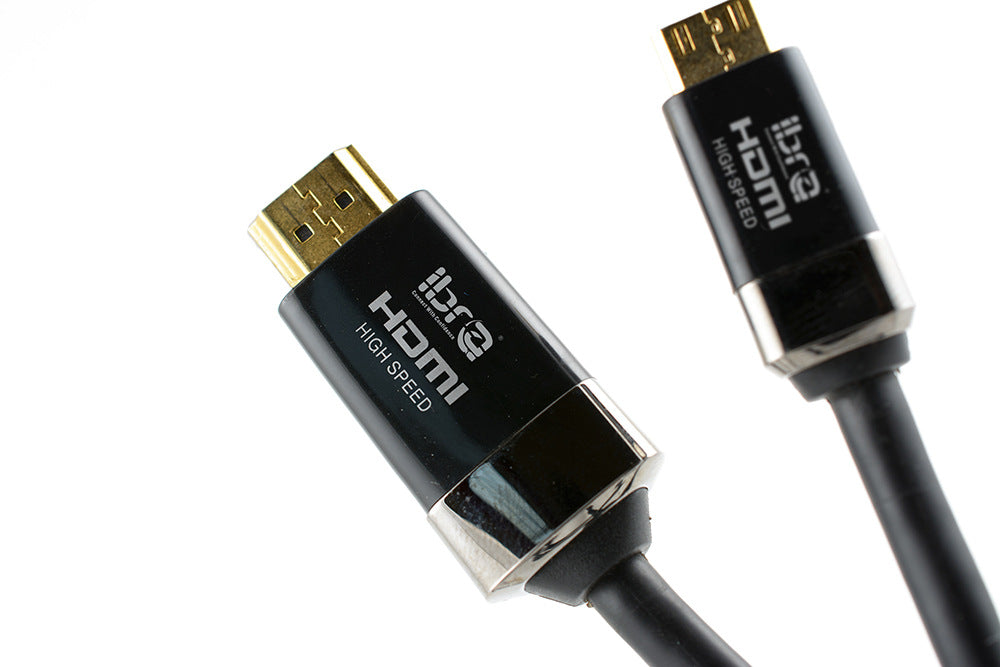News

8K HDMI Fiber Optic Cables
Understanding Mini HDMI Cables: What You Need to Know
In today’s digital age, connectivity plays a crucial role in seamlessly sharing media and data across devices. One of the most compact and versatile solutions is the Mini HDMI cable. Whether you're connecting a camera to a monitor or a tablet to a TV, this small but mighty cable ensures high-quality audio and video transmission.
In this article, we’ll explore what Mini HDMI cables are, how they differ from standard HDMI cables, and why they’re essential for modern tech setups.
What is a Mini HDMI Cable?
A Mini HDMI cable is a smaller version of the standard HDMI (High-Definition Multimedia Interface) cable. It was designed to accommodate compact devices that don’t have space for a full-sized HDMI port. Despite its smaller size, a Mini HDMI cable delivers the same high-definition quality as its larger counterpart, making it ideal for portable gadgets.
Common devices that use mini HDMI ports include:
Digital cameras
Camcorders
Tablets
Portable gaming consoles
Transitioning from this overview, let’s explore the key differences between HDMI and mini HDMI to understand why these variations exist.
HDMI vs. Mini HDMI: Key Differences
At first glance, the most apparent difference between HDMI and mini HDMI is size. The standard HDMI connector measures approximately 14mm wide, while the mini HDMI connector is about 10.42mm wide. This reduced size makes mini HDMI connectors perfect for smaller devices without compromising performance.
Here are the main differences:
Size and Portability: Mini HDMI connectors are designed for compact devices, whereas standard HDMI connectors are used for larger gadgets like TVs, gaming consoles, and laptops.
Usage: Mini HDMI is commonly found on cameras and tablets, while standard HDMI is used in home theater systems and desktop monitors.
Adapters: If you need to connect a device with a mini HDMI port to a standard HDMI port, adapters or converter cables are readily available.
Transitioning to the next section, understanding these differences helps you choose the right cable for your specific needs.
Advantages of Using Mini HDMI Cables
When considering cables for smaller devices, the Mini HDMI cable stands out for several reasons:
1. Compact Design
The small size of the mini HDMI connector allows it to fit easily into compact devices, saving space without sacrificing quality. This makes it an excellent choice for portable equipment.
2. High-Quality Transmission
Like standard HDMI cables, Mini HDMI cables support high-definition video and audio, ensuring an immersive viewing and listening experience. They can handle resolutions up to 4K, making them suitable for professional videography or photography setups.
3. Versatility
From streaming videos to presenting slideshows, Mini HDMI cables serve a variety of purposes. They can connect your camera to a monitor for live previews or link your tablet to a TV for larger display options.
Transitioning to practical applications, let’s dive into where and how these cables are commonly used.
Where Do People Use Mini HDMI Cables?
The versatility of a Mini HDMI cable makes it a must-have accessory for many modern devices. Some of its most popular applications include:
1. Photography and Videography
Professional photographers and videographers often use mini HDMI ports to connect their cameras to external monitors. This setup allows them to view footage in real time, ensuring precise framing and focus.
2. Portable Gaming Consoles
Many handheld gaming consoles support mini HDMI connections, enabling users to project their games onto larger screens.
3. Tablets and Laptops
For those who use tablets or lightweight laptops, mini HDMI ports are often included to connect the device to a TV or monitor for presentations, gaming, or streaming.
4. Action Cameras
Action cameras, designed for adventurous shoots, often include mini HDMI ports for quick playback on larger screens.
Transitioning to the practical side, let’s explore what to look for when purchasing a small HDMI cable for your device.
Choosing the Right Mini HDMI Cable
When selecting a Mini HDMI cable, keep the following factors in mind to ensure compatibility and performance:
1. Cable Length
Choose a cable length that suits your needs. Short cables are ideal for stationary setups, while longer ones offer flexibility for dynamic environments.
2. Build Quality
Invest in cables with sturdy connectors and durable insulation to prevent wear and tear, especially if you’ll be using them frequently.
3. Compatibility
Ensure the cable supports the resolution and features your device requires. For instance, if you’re working with 4K video, the cable must support HDMI 2.0 or higher standards.
Transitioning to solutions, and understanding these factors will help you avoid common pitfalls when purchasing mini HDMI cables.
How to Maintain Your Mini HDMI Cable
Proper maintenance can prolong the lifespan of your Mini HDMI cable and ensure consistent performance. Here are some tips:
Avoid Bending the Cable: Excessive bending can damage the internal wiring. Use cable organizers to prevent tangling.
Protect the Connectors: Keep the connectors covered when not in use to avoid dust and debris buildup.
Store Properly: Coil the cable neatly and store it in a cool, dry place to prevent damage.
Transitioning to troubleshooting, these practices will help maintain the quality of your small HDMI cable over time.
Conclusion
Understanding the capabilities and advantages of Mini HDMI cables can enhance your tech experience, especially when dealing with compact devices. These cables bridge the gap between portability and high-quality performance, making them essential for photographers, gamers, and tech enthusiasts alike.
Whether you’re comparing HDMI and mini HDMI or looking for the perfect small HDMI cable, knowing what to look for ensures you make the right choice. By maintaining and using these cables correctly, you’ll enjoy seamless connections and top-notch audio-visual experiences for years to come.
